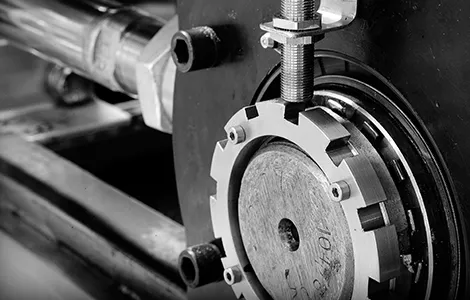Choosing the Right Steel Belt Support Rollers for Your Steel Belt System
October 04, 2024
When designing or maintaining a steel belt conveyor system, one crucial component that directly impacts its efficiency and longevity are the support rollers. Selecting the right conveyor rollers tailored to your specific application can significantly improve system performance, reduce maintenance costs, and prolong the life of the steel belt itself. In this guide, we explore the key factors to consider when choosing belt support rollers for your steel belt system.
Load Capacity
The load capacity is perhaps the most critical factor when selecting rollers. Every conveyor system is designed to carry a specific weight, and the rollers must be able to handle both the static and dynamic loads. When evaluating the load-bearing capacity of a roller, it’s essential to consider the following:
Material of the goods: Heavier materials such as metal parts or machinery will require more robust rollers than lighter goods like food products or textiles.
Belt tension: The greater the load, the higher the belt tension, which directly affects the rollers.
Speed of the conveyor: Systems that operate at high speeds will exert more force on the rollers, necessitating stronger components.
By ensuring the rollers are designed for the system’s load requirements, you can prevent premature wear and tear and avoid frequent roller replacement.
Environmental Conditions
Steel belt conveyor systems often operate in various environments, from food processing plants to industrial manufacturing settings. Understanding the specific conditions your system will operate in is key to choosing the appropriate roller material and design.
Temperature: High-temperature applications, such as those in metal production or baking, will require heat-resistant rollers that maintain integrity under extreme conditions. Steel or specialised composite materials may be ideal for these settings.
Moisture and hygiene: In environments with high humidity or exposure to water, such as food processing, corrosion-resistant rollers made from stainless steel are preferred. This ensures longevity and prevents contamination.
Dust and debris: Dusty environments, such as factories or mining sites, can cause rollers to wear out more quickly if they are not protected. Sealed or covered rollers are often used in these situations to reduce dust infiltration and increase roller life.
Roller Material
The material of the support roller plays a significant role in its durability and suitability for the application. Depending on the demands of your steel belt conveyor, you may choose from several materials, each offering unique benefits:
Steel rollers: Best suited for heavy-duty applications due to their strength and durability. Steel rollers are also ideal for environments with abrasive materials, as they resist wear and tear.
Stainless steel rollers: Often used in food-grade applications due to their corrosion resistance and ease of cleaning. Stainless steel is also suitable for humid or moist environments, ensuring long-term performance without rusting.
Polyurethane-coated rollers: These are used where there is a need to reduce noise and vibration. Polyurethane coatings also provide better grip and help protect more delicate materials from damage.
By selecting the appropriate roller material, you can tailor your conveyor system to handle specific tasks more efficiently.
Impact on Efficiency and Longevity
The right choice of rollers can significantly enhance the overall efficiency of your conveyor system. Rollers that are well-matched to the system’s operational demands reduce friction, lower energy consumption, and ensure smooth movement of materials along the belt.
In contrast, choosing unsuitable rollers can lead to uneven wear on the belt, frequent system breakdowns, and costly repairs. Therefore, regular maintenance, including proper roller alignment and lubrication, is essential for maintaining efficiency and extending the life of both the rollers and the steel belt itself.
Roller Configuration and Alignment
Roller configuration is another factor that impacts the smooth operation of steel belt conveyor systems. Ensuring that the rollers are aligned correctly helps maintain proper belt tracking, reducing the risk of belt damage. Misalignment can cause uneven belt wear, increased friction, and even derail the system.
For certain applications, tapered rollers are necessary to guide the belt along curves, while straight rollers are ideal for linear belt paths. Proper alignment ensures consistent product movement, reduces strain on the motor, and enhances the belt’s overall performance.
Conclusion
Choosing the right rollers for your steel belt conveyor system is more than a matter of selecting the strongest or most affordable option. By carefully considering factors such as load capacity, environmental conditions, roller material, and alignment, you can optimise your conveyor system for efficiency and longevity.
At PACE, we understand the intricacies of steel belt conveyor systems and are committed to helping you find the right components for your unique application. Contact us today for expert guidance on selecting the perfect rollers for your system.

